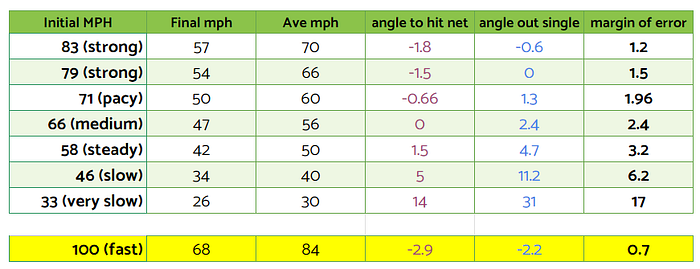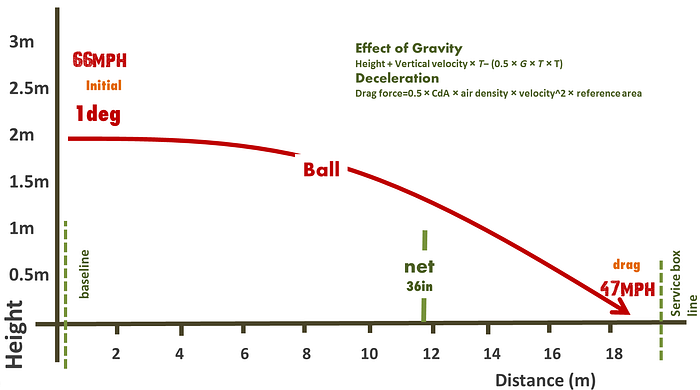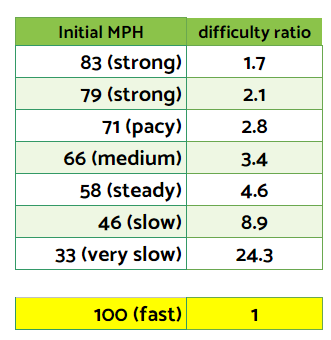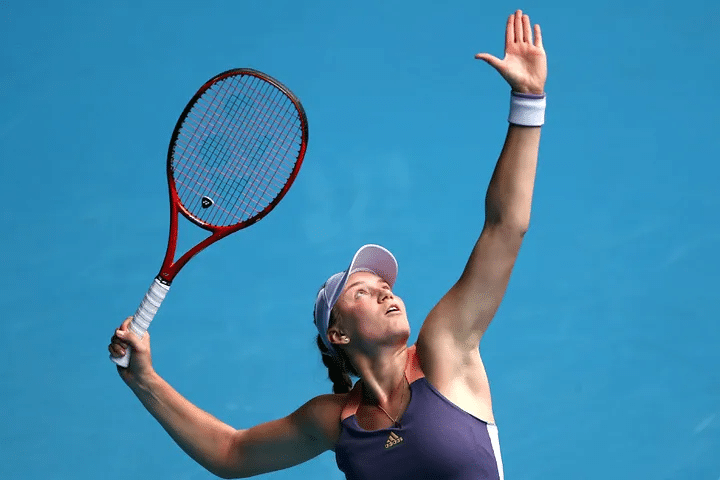Watch someone who is new to tennis and I guarantee they will be struggling with the serve. The net seems really high, and the service box really small, and a long way away. And that’s all true, because there is a fine margin of error from hitting the ball in the net to hitting the ball out. To make matters worse no one tells you how hard to hit the ball or at what angle. Its simply trial and error. Lots and lots of trial and error!
Today I am going to spill the beans on the “beginners serve”. I will tell you the exact angle to serve and how hard to hit.
The Physics of a Tennis Serve

A successful tennis serve has the following characteristics:
The server stands behind the baseline, 11.88m from the net.
The server hits the ball diagonally between 0.5deg and 23.5deg
The server hits the ball from their serving height (eg 2m, 2.5m, 3m) down but over a net of at least 0.91m at 11.88m
The balls hits the floor 18.3m (T serve) or 19.2m (singles serve into corner) (20m is just possible if squeezing into singles corner when serving)
Using these variables you can work out everything you need to know about the beginners serve. Well almost. You also need to know that the ball slows quite a bit due to aero drag (more if the ball is worn) and this is given by this equation.

The Margin of Error for a Slow Serve
Using the above, and assuming a serve height of 2m (low, but not uncommon for a beginner) then the key fact is that the slower the serve, the more the margin of error. Imagine firing a gun at the service line, one tiny movement and the bullet misses. Now imagine throwing a tennis ball into the service box by hand: pretty easy. Here’s why.
With a super slow serve of 33mph, the ball is in the air so long, its drops a long way, so you have to hit up at 14deg to clear the net, but it still easily drops in unless you aim up more than 31deg. So there is a huge (31–14) 17deg margin of error.

Serving at 46mph there would be a 6deg margin of error; serving at 58mph this would be reduced to 3deg but still giving a decent chance to a beginner of making it. At 66mph (initial) things get tough; the margin of error is only 2deg and further the launch angle is between 0deg — 2.3deg. Finally at 79mph (66mph average) this is first time you cannot aim up with your serve (without topspin) without the ball going out.

How Much Easier is a Slow Serve (vs a 100mph serve)?
Using the above, and assuming a serve height of 2m at 100mph the ball slows to around 68–75mph depending on conditions (84mph average). From a lowish serving height of 2m there would only be a 0.7deg margin of error; with the ideal serve being minus 2.5deg.

Conclusions
Using complicated maths or a nice projectile simulation it is clear that the slow serve is the beginners serve for a reason. Sure you can still hit the net, or put it long, but if you serve at 33mph you have 24x more chance of getting it in than when serving at 100mph (from 2m height)! Even at a fairly decent 71mph , it should be three times as easy to get the ball in than at 100mph. Of course there is the small problem of handling the return. Let’s save that for another time!




